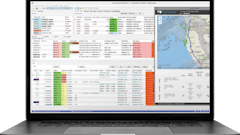
Nearly 80% of supply chain executives polled in a recent survey by Verusen revealed they cannot digitally track the movement of direct and indirect materials across their enterprise network.
“Verusen’s 2022 Supply Chain Industry survey reveals that poor data quality, outdated technology and disparate data silos are the Top 3 causes for inefficiency in supply chain executives’ materials management process,” says Paul Noble, Verusen’s founder and CEO. “Supply chain executives are constantly faced with indecision due to the lack of visibility into their inventory availability. This indecision leads executives to make hasty decisions around direct and indirect materials data. However, this need not be the case, especially with new AI tools that can accurately generate guidance for actionable decisions across an enterprise supply network.”
From GlobeNewswire:
● When asked about hurdles to a digitally transformed approach to materials management, 76% of execs pointed to disparate silos of materials data and lack of knowledge.
● 43% of executives surveyed reported a lack of visibility into inventory availability as the primary hindrance to sharing critical materials with other facilities within their network.
● The No. 1 priority among respondents over the next 12 months is reducing supply risk for their materials.
● Over 75% of respondents believe implementing an AI-driven materials management solution would take 12-24 months.
● 80%-plus report they cannot digitally track the movement of direct and indirect materials across their enterprise network.
● Over half of the respondents claim they need to expedite spare parts on a weekly and monthly basis to avoid production outages.
“Today’s economic environment makes it more difficult than ever to manage supply chain challenges across an enterprise supply network. To accomplish this, executives must look to purpose-built platforms to gain control of their global supply chain and materials data,” adds Noble.



















